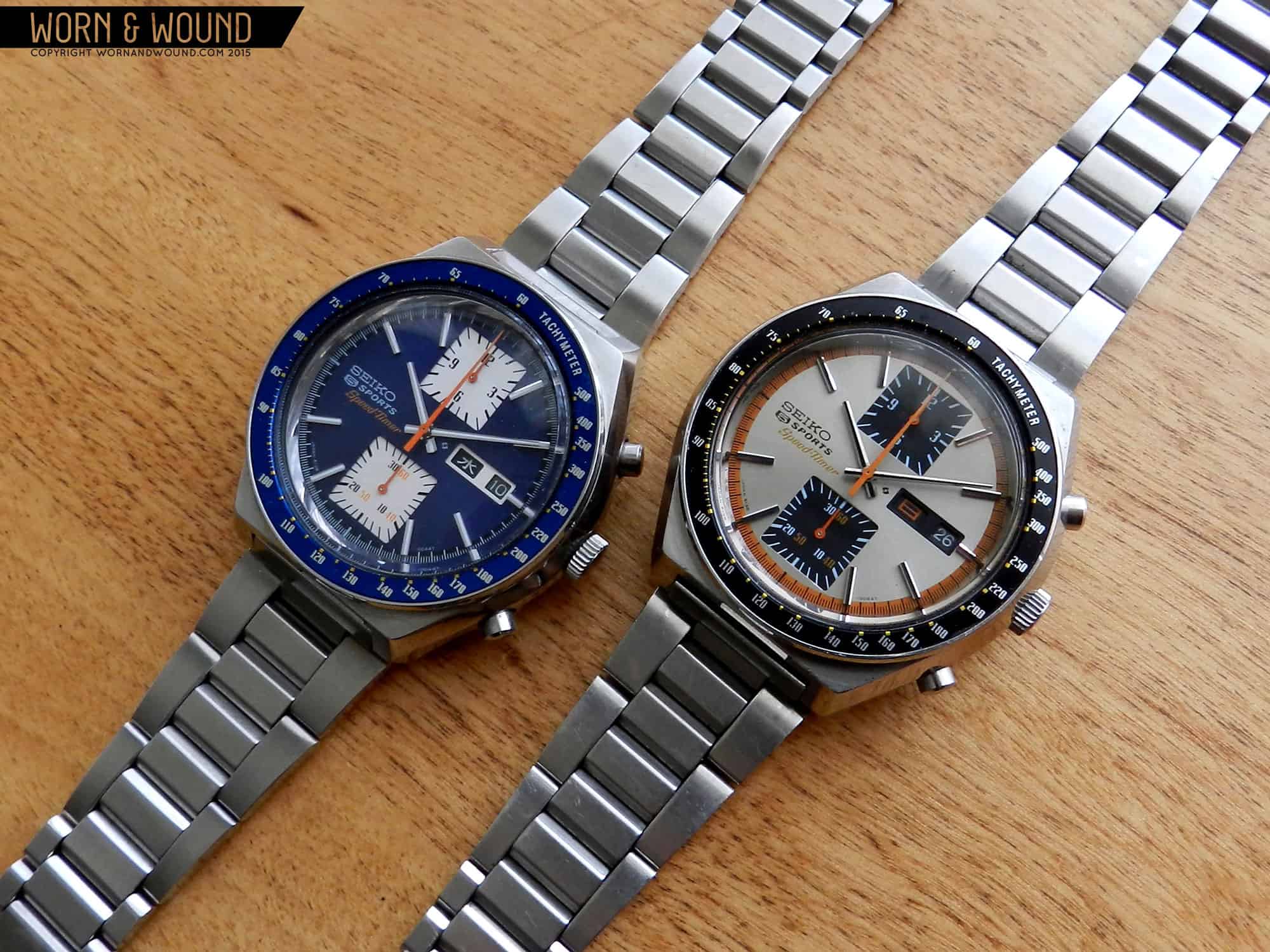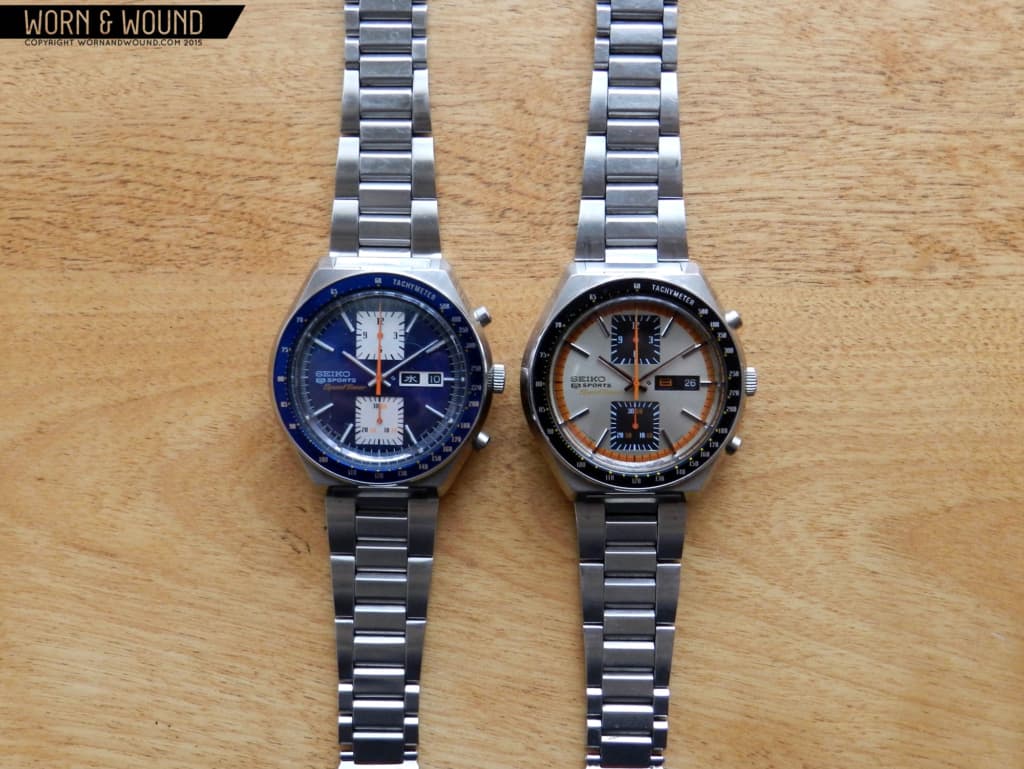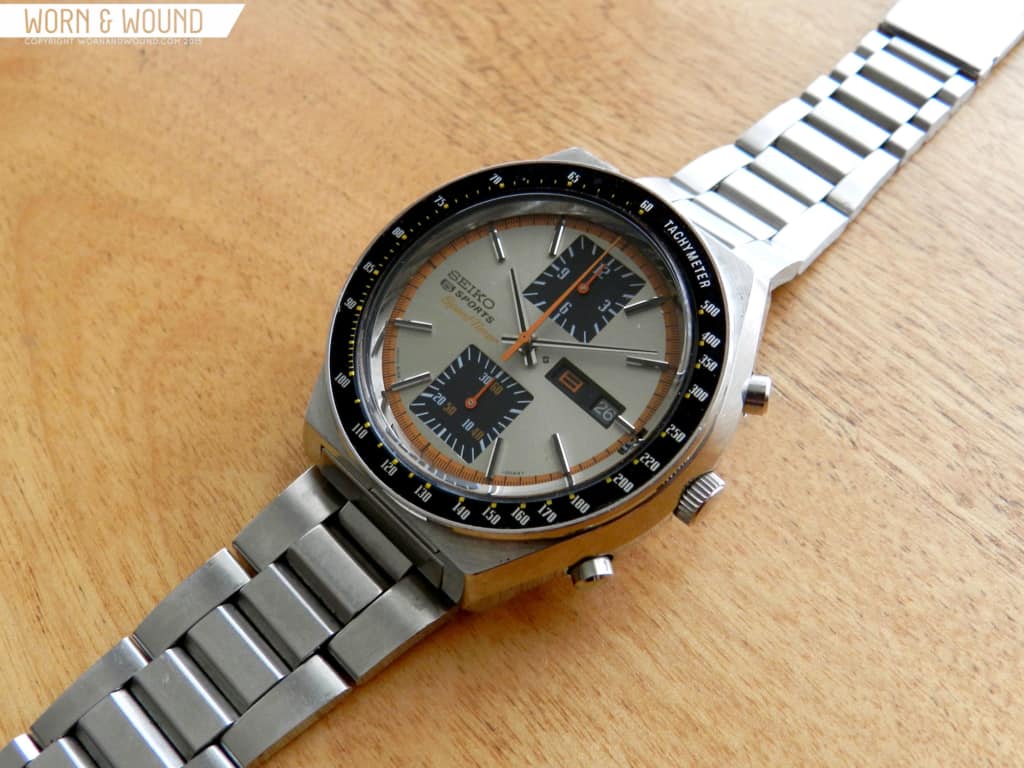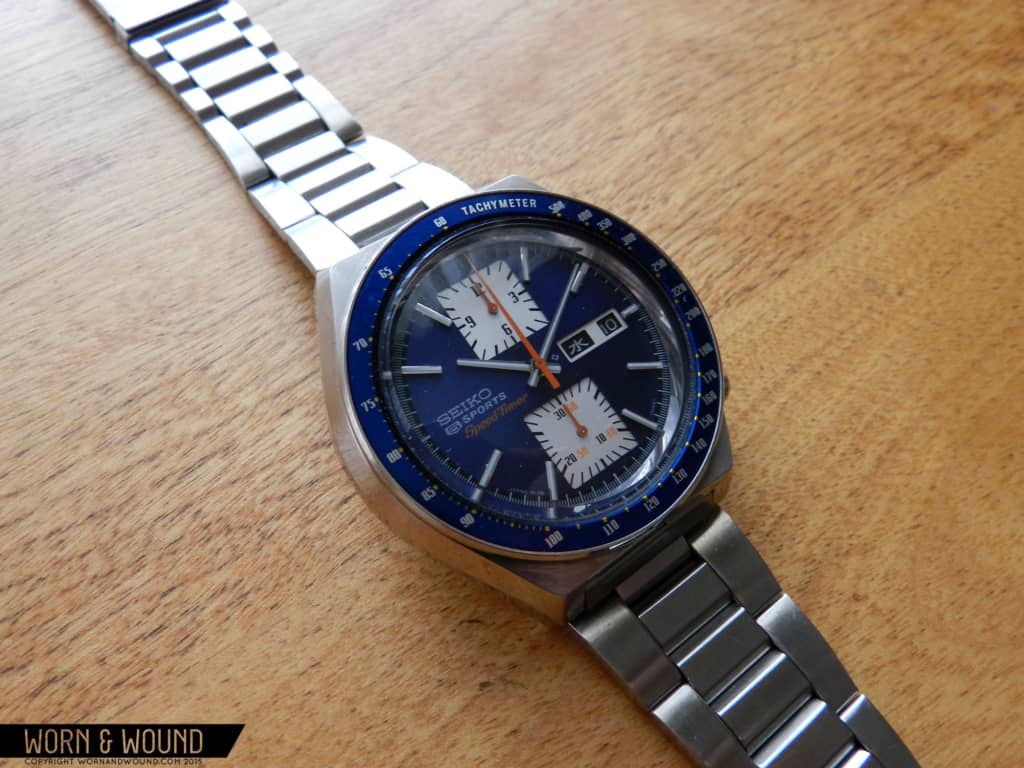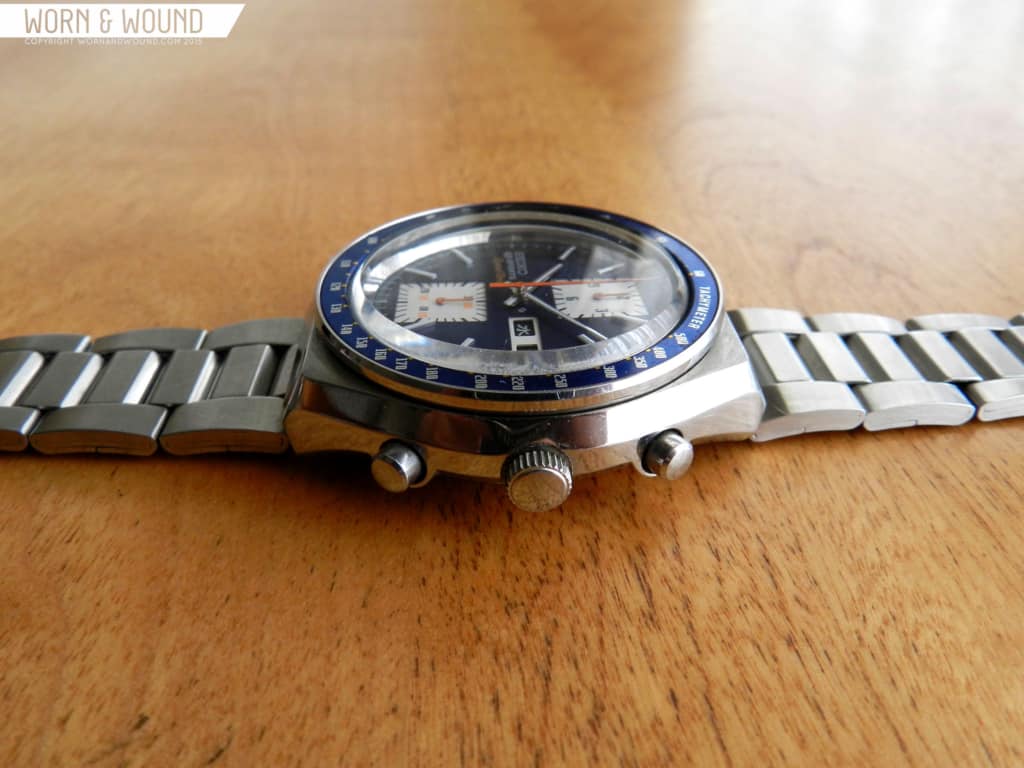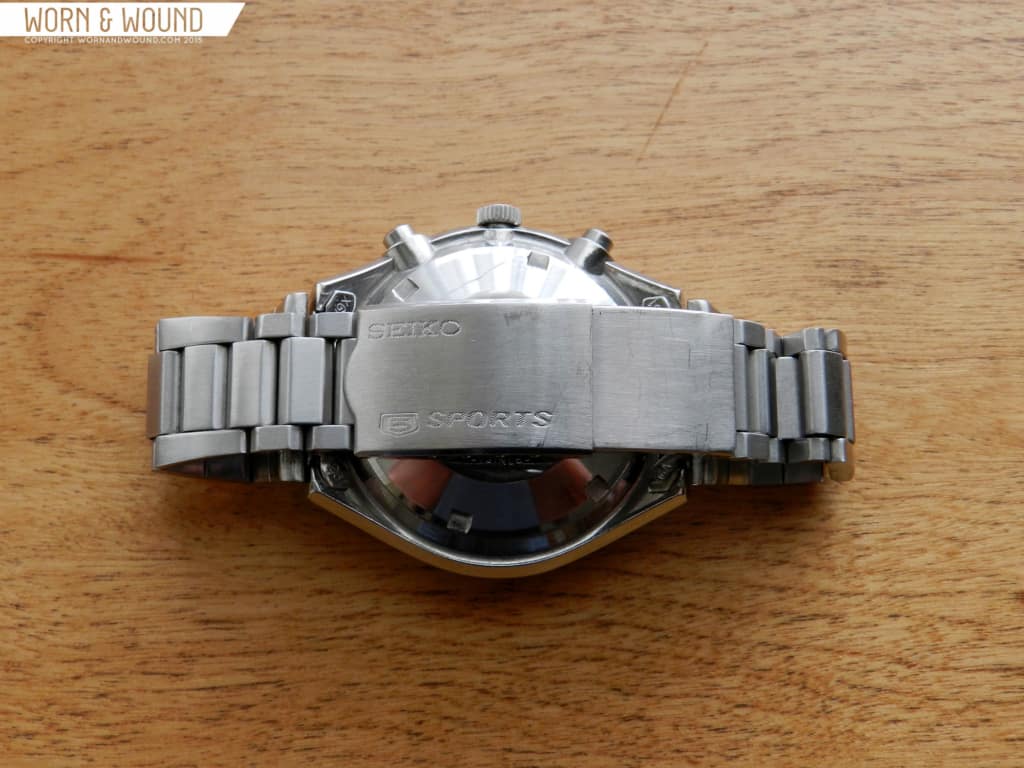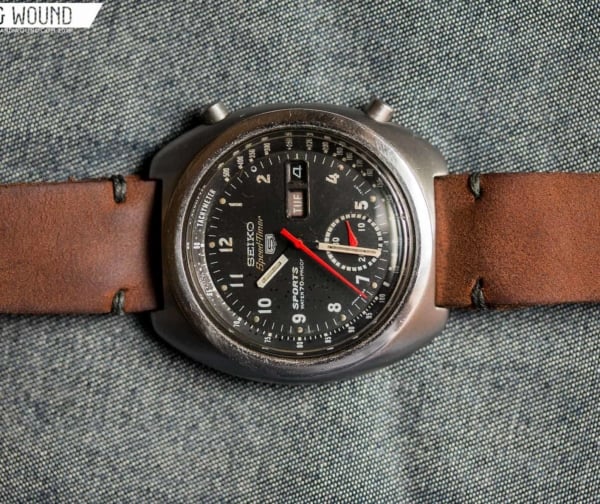Of all the incredible chronographs produced by Seiko in the 1970’s, in my opinion there is one that stands head and shoulders above the rest: The 6138-0030 aka “Kakume”. During this era there were two main chronograph calibers used, the single register 6139 and the dual register 6138. The fiercely popular 6139-600X (aka “Pogue”) chronographs get the lions share of attention due to their status as arguably the first automatic chronograph in space, having been worn by William Pogue during space flight. By comparison the 6138 series is under appreciated, but it definitely stands tall in its own right.
The 21 jewel 6138A released in 1970 was the first fully integrated automatic chronograph with a column wheel and vertical clutch coupling mechanism. Some time later, they switched to the 23 jewel 6138B. They are both automatic (rotor winds in both directions like most Seiko calibers) and hand windable, which is uncommon in vintage Seikos, and the day and date feature a true quickset mechanism. Add to this the fact that Seiko is a true in-house manufacture, right down to the lubricating oils, and the Seiko 6138 is one that can hold its own against any brand.
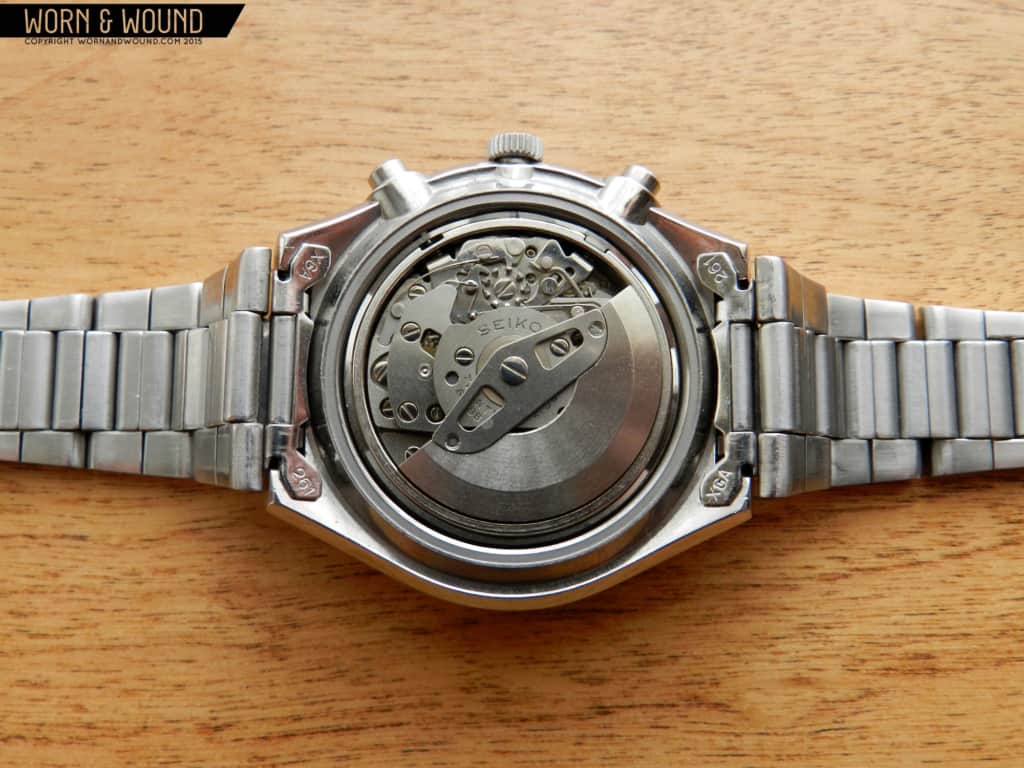
“Kakume” apparently means “square eyes”; one look at the dial and you can see where this nickname comes from. The 0030 came in two color designs, a blue dial with square silver subdials and blue tachymeter bezel, and champagne dial with square black subdials and black tachymeter bezel. There are two further variants of each of the color schemes. One is badged “5 Sports, Speed-Timer” on the 9 o’clock side of the dial and has steel dauphine-esque hands. The second variation is badged “Chronograph Automatic” at 9 o’clock and has lume filled black baton hands that have a cool arrow shaped lume tip at the ends.
These combinations of dial and hands are the most commonly seen, however I have seen either set of hands on both dials. Not sure if they left the factory that way, or if they were swapped or what. Like most Seiko models, there are seldom any rules for which there is no exception! The examples reviewed and pictured here today are the Speed-Timer variety, which is my favorite of the two. The dials are a sandwich style, meaning the inset subdials and day/date window are made of a separate sheet of metal attached under the dial rather than simply stamped into the main dial. The blue dial has a brilliant radial brushed satin finish, while the subdials have a vertical brushed finish, and the hands have a nice white (not lume) stripe.









 Featured Videos
Featured Videos




